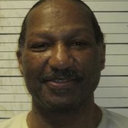
Oklahoma is paying $15,000 per execution, plus $1,000 for each day of training, to an unnamed doctor to participate in the process of putting state prisoners to death. Under the agreement, the doctor stood to receive an estimated $130,000 over the course of the 19-week-period between October 28, 2021 and March 10, 2022 in which the state had scheduled the executions of seven prisoners.
The payments were disclosed by Oklahoma prison officials during federal court hearings in January 2022 on motions by Donald Grant and Gilbert Postelle to stay their executions. Grant was executed January 27, 2022 and Postelle’s execution is set for February 17, 2022.
According to The Oklahoman, which first reported the payments, Oklahoma Corrections Department operations chief Justin Farris recruited the doctor in 2021. Farris testified that the doctor participates in verifying that executioners are using the correct three drugs authorized in the state’s lethal-injection protocol, placing the intravenous execution lines, performing consciousness checks, and verifying the prisoner’s death. The doctor does not administer the drugs that kill the prisoner.
Under the terms of the agreement, the doctor receives a $15,000 fee for each execution, with additional payments for participation in training sessions. Farris testified that there is usually one training session per week, with two sessions scheduled during the week of an execution. Had all seven executions scheduled over the course of the state’s five-month execution spree been carried out, the doctor stood to receive $105,000 for participating in the executions, plus $26,000 for training sessions, not including any training in the weeks preceding the execution spree.
Based on Farris’s testimony, the doctor has received at least $51,000 to date for his involvement in the executions of John Grant, Donald Grant, and Bigler Stouffer and training sessions the weeks of those executions and will receive another $17,000 the week of Postelle’s expected execution. He received at least $2,000 for training sessions the week Julius Jones was scheduled to be executed. Jones received a commutation four hours before his execution was scheduled to take place and it is unclear if and how much the doctor was paid for execution preparations that day. Wade Lay and James Coddington received stays of execution prior to the weeks of their scheduled executions.
Media witnesses reported that members of the execution team wiped vomit from the face of John Grant at least twice during a botched execution on October 28, 2021 in which Grant experienced full-body convulsions over a period of fifteen minutes before being declared unconscious. The Oklahoman reported that prison officials said at the stay of execution hearing that the doctor and a nurse had entered the execution chamber one time to clean Grant’s face of vomit. The paper reported that, according to the testimony, the doctor rubbed John Grant’s and Stouffer’s sternum with his knuckles to determine if they were unconscious, performed an eyelid check on Grant, and shook Stouffer and called his name before declaring the prisoners unconscious. The hearing occurred before Donald Grant’s execution.
In 2015, then Oklahoma Attorney General Scott Pruitt convened a grand jury to investigated the state’s botched execution of Charles Warner using an unauthorized execution drug and its near-execution of Richard Glossip with the same wrong drug. After seven months of investigation, the grand jury issued a report in May 2016 identifying a wide range of conduct by state officials that it characterized as “negligent,” “careless,” and in some instances “reckless” deviations from the state’s execution protocol. The grand jury also found that the judgment of prison officials throughout the execution process was “clouded” by the “paranoia” of keeping execution information secret, “caus[ing] administrators to blatantly violate their own policies.”
Oklahoma has continued to refuse to provide information about the sources of the drugs it is using in the executions or the qualifications and training of the personnel who are carrying them out.
The Ethics of Physician Participation in Executions
In July 2006, the American Medical Association (AMA) issued a statement that physician participation in lethal injection violates medical ethics. Then-AMA President William G. Plested III noted at the time that physician participation in executions “violates their oath to protect lives and erodes public confidence in the medical profession.”
“A physician is a member of a profession dedicated to preserving life when there is hope of doing so,” the AMA statement said. “The use of a physician’s clinical skill and judgment for purposes other than promoting an individual’s health and welfare undermines a basic ethical foundation of medicine — first, do no harm.”
The AMA Code of Medical Ethics explicitly prohibits physician involvement in such activities as selecting injection sites, starting intravenous lines, prescribing, administering, or supervising the use of lethal drugs, monitoring vital signs, and declaring death.
Nolan Clay, Oklahoma execution doctor paid $15,000 each time death penalty carried out, The Oklahoman, January 12, 2022.



